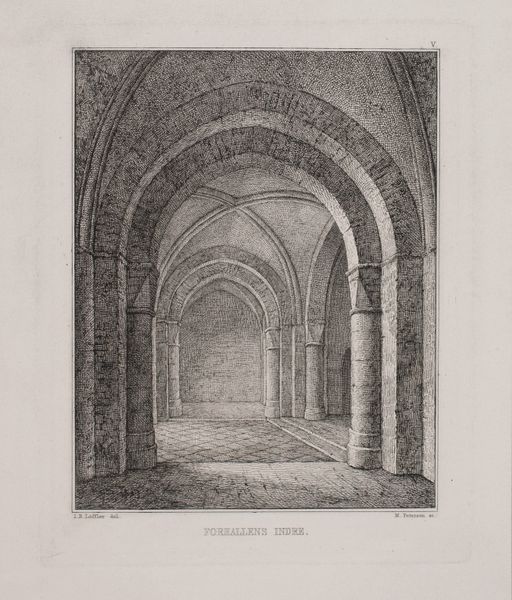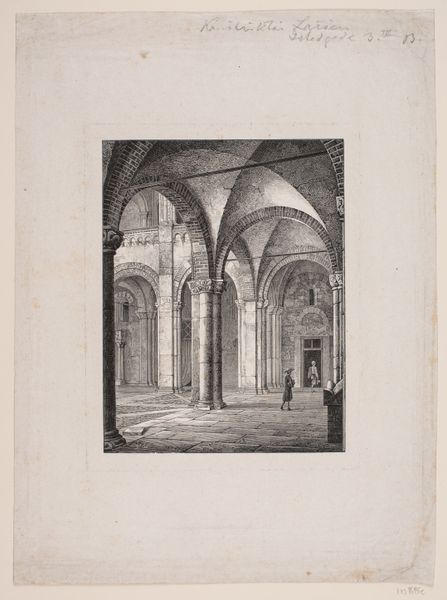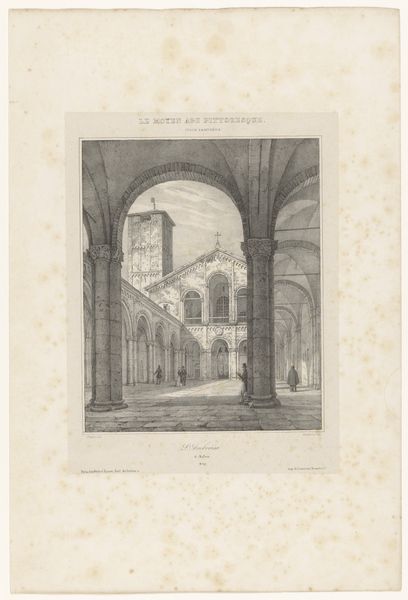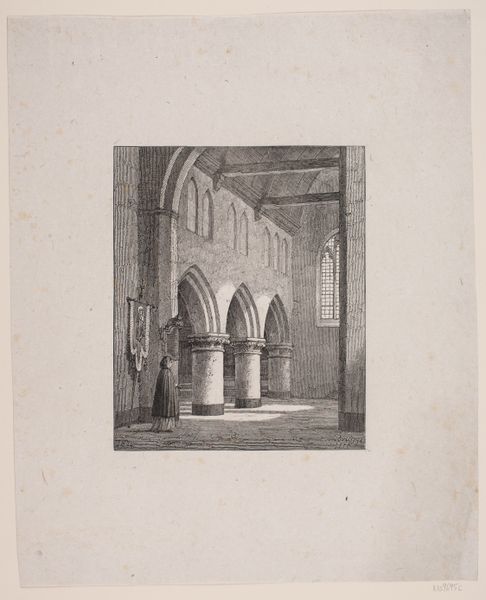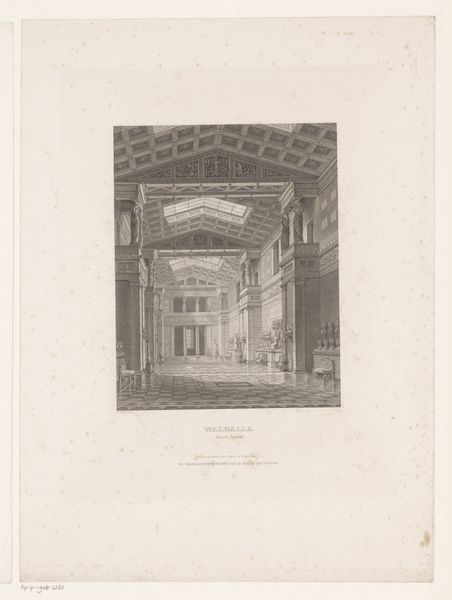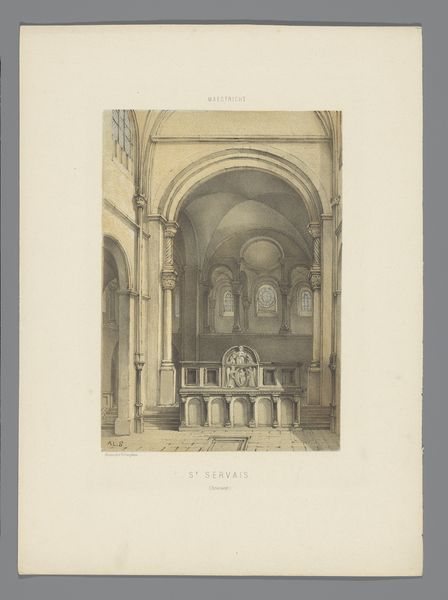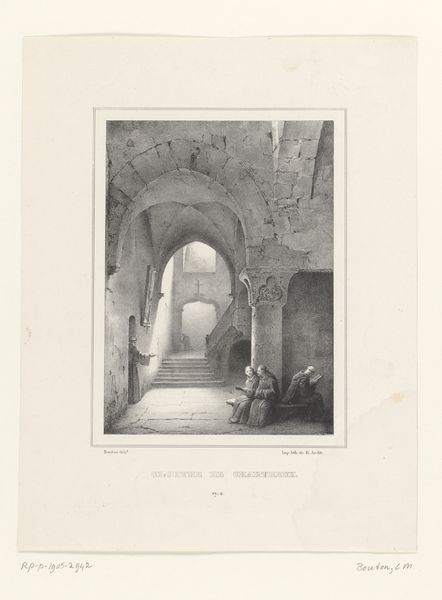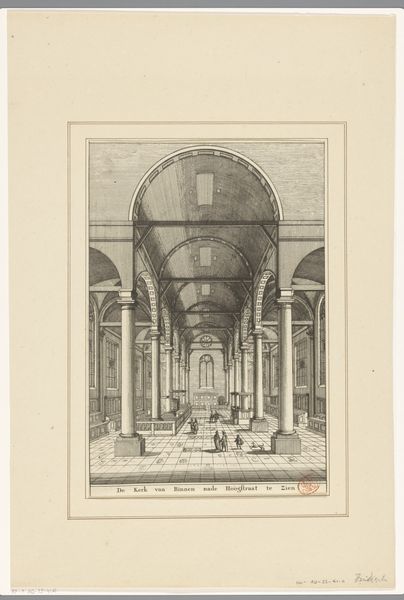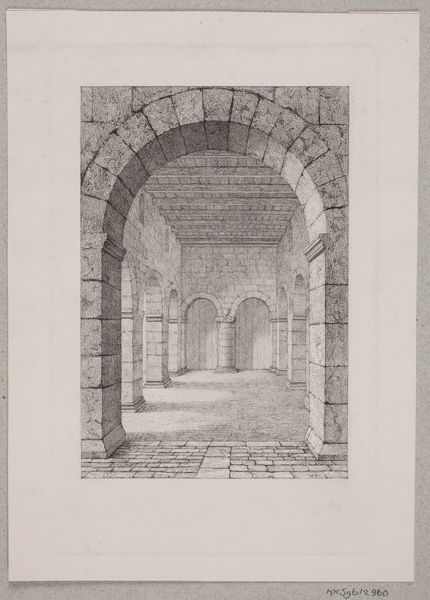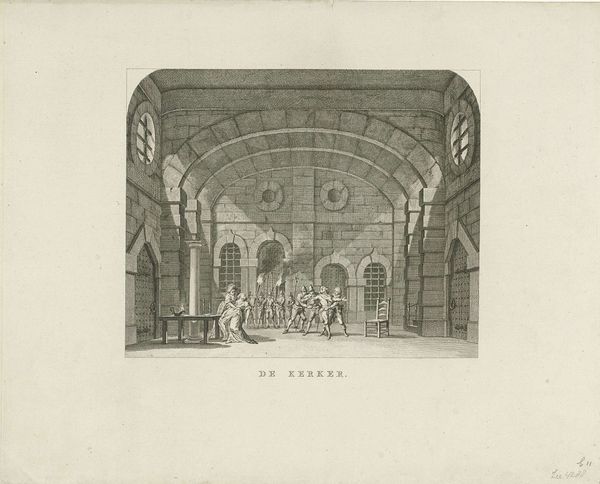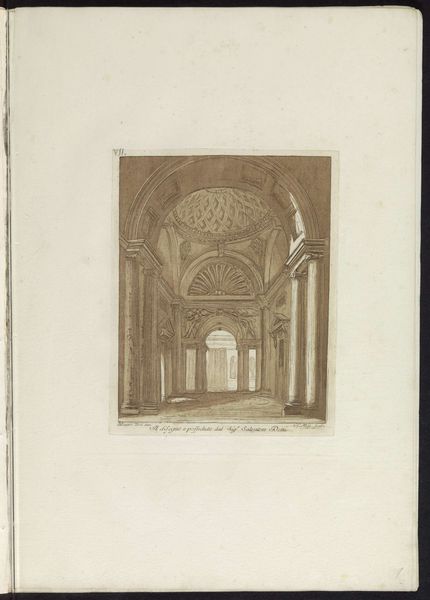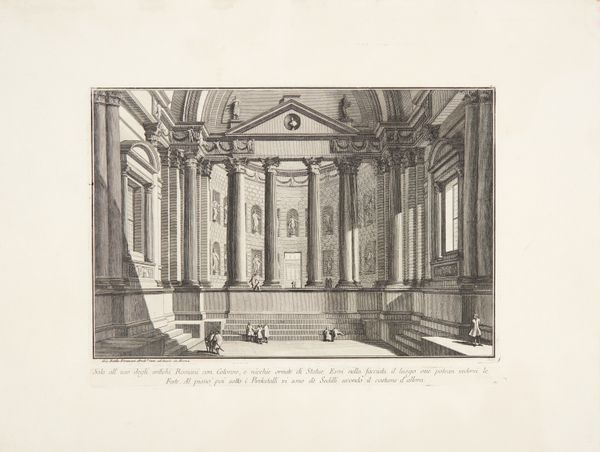
print, etching
#
medieval
# print
#
etching
#
landscape
#
history-painting
#
realism
Dimensions: 158 mm (height) x 122 mm (width) (Plademål)
Curator: This etching, titled "Gumlöse kirke i Skåne set imod alteret," created between 1834 and 1866 by Julius Magnus-Petersen, offers a glimpse into the medieval church in Skåne, Sweden. The print captures the church's interior, specifically the view towards the altar. Editor: There's an imposing sense of silence within this space; the rhythmic, stone arches create this amazing feeling of both monumentality and introspection. What strikes you first? Curator: I think immediately about the Realism movement influences, especially the importance of architectural prints in shaping public understanding of medieval history and the preservation movement that was developing at that time. Etchings such as this played a key role in disseminating visual knowledge of historical sites. Editor: Indeed! I see the historical record. The church interior with its rounded arches really creates a sense of looking back. Notice how the linear perspective leads our eyes inexorably toward the altar, visually anchoring centuries of ritual and cultural memory in a single, receding point. Curator: Exactly, these images often functioned as documentation but they simultaneously became symbols of national identity, especially with landscape views and historical monuments during the nineteenth century. Editor: The weight of all those cultural associations becomes palpable through Magnus-Petersen's attention to detail. Each brick, each stone contributes to this solemn feeling. Even the seemingly mundane architectural details function as symbolic markers. Curator: I agree; the careful rendering speaks to a reverence for the building. These architectural details create an environment that transcends being just a place of worship; it turns into a marker of shared past. The imagery and artistic approach merge to present a statement about both cultural value and the artist's position within contemporary historical debates. Editor: I suppose what resonates with me is its enduring, almost mystical feel. So many generations walked these stones. I wonder, in viewing this piece, how that idea permeates into our understanding of history, memory, and how we as viewers relate to the medieval symbolism held in spaces like this. Curator: Absolutely; images like this provide vital keys that unlock our cultural memory, linking us back to places and spaces of importance to past generations. Editor: That intersection between historical narrative and iconic representation, makes viewing this image a wonderfully contemplative experience.
Comments
No comments
Be the first to comment and join the conversation on the ultimate creative platform.
